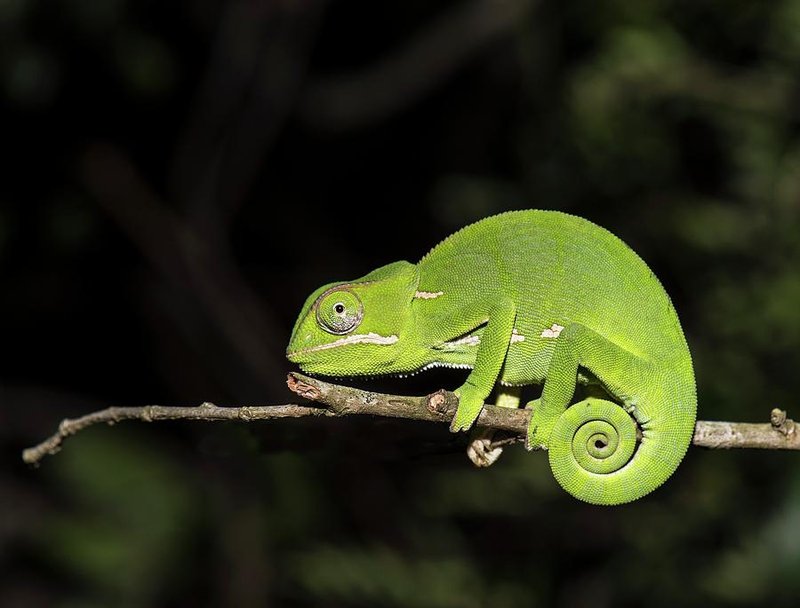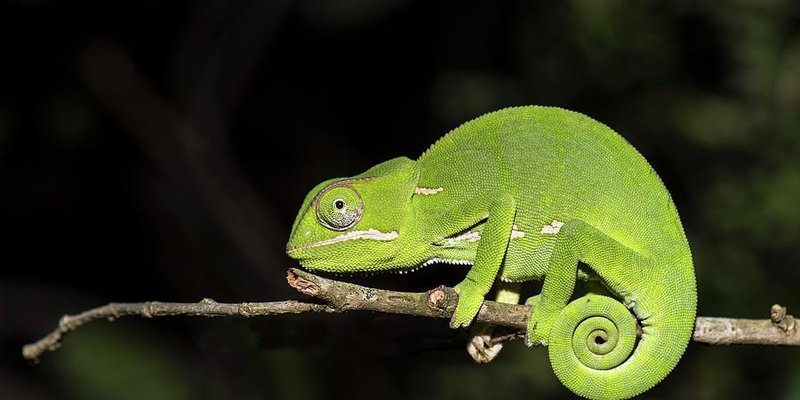
You might be wondering what makes these little guys so special. Besides their vibrant colors and amazing adaptability, they have specific needs and behaviors that must be respected. Whether you’re considering adding one to your home or you already have a flap-necked chameleon, understanding the do’s and don’ts of handling them is crucial for a happy and healthy pet. Let’s dive into the best practices to ensure you and your chameleon thrive together.
Understanding Your Flap-Necked Chameleon
Before you even think about picking up a flap-necked chameleon, it’s essential to understand their nature. These creatures are not like cats or dogs—they don’t thrive on cuddles and constant attention. Instead, they are solitary animals that prefer their own space.
Imagine if you were surrounded by noisy friends all the time, even when you just wanted to relax. That’s how your chameleon feels! Providing them with a quiet environment allows them to feel secure, making it easier for you to interact with them. Plus, understanding their natural habitat—tropical forests in Africa—will help you replicate their needs at home.
Their body language is another key to understanding them. When a chameleon changes colors, it could be a sign of stress, excitement, or even just temperature changes. So, keep an eye out! A calm chameleon will usually have a relaxed posture and gentle colors.
Do: Create a Comfortable Environment
One of the best ways to ensure a smooth handling experience is to create a comfortable environment for your flap-necked chameleon. Think of it as making a cozy little bubble for them, where they can feel safe and secure.
You’ll want to set up a spacious terrarium with plenty of branches, plants, and hidden spots so your chameleon can explore without feeling exposed. The more they feel like they are in a natural environment, the less stressed they’ll be. Make sure to maintain proper humidity and temperature, as these factors significantly influence their well-being.
Adding leaves and other decorations not only helps them feel at home but also gives them places to hide. However, don’t overcrowd the space. They appreciate open areas where they can bask and hunt. A good rule of thumb is to keep it simple yet enriching.
Don’t: Force Interaction
While it might be tempting to scoop your chameleon up for some quality bonding time, remember this: don’t force interaction. Chameleons are not like dogs—they don’t crave companionship or playtime in the same way.
Instead of grabbing your chameleon, let them come to you. Leave your hand near their favorite branch and allow them to approach you on their own terms. This not only reduces stress but also helps them associate your presence with safety.
If your chameleon seems agitated or displays bright colors (often indicating fear), back off and give them some time. Trust is built slowly, and over time, they may start to feel comfortable enough to crawl onto your hand for a little exploration.
Do: Handle With Care
When you do get the chance to handle your flap-necked chameleon, remember the golden rule: handle with care. These little guys are delicate creatures with fragile bones. If you’re not careful, it can lead to injury.
Always support them from below, cradling their body and avoiding sudden movements. Think of holding a tiny bird—it requires a gentler touch! Place your other hand above them to give them a sense of security without trapping them.
And don’t forget about temperature regulation! If they feel too cold, they may not want to interact. Warm your hands slightly before handling, so it feels inviting. Your chameleon will appreciate it, and you’ll be less likely to startle them.
Don’t: Ignore Their Diet and Hydration Needs
Just because you’re focusing on handling doesn’t mean you can overlook your chameleon’s diet and hydration needs. A healthy chameleon is a happy chameleon, and feeding them properly is a big part of that.
Flap-necked chameleons thrive on a varied diet of live insects, like crickets and mealworms. Ensure you’re providing appropriately sized prey—too large, and they might struggle to eat! Dust their food with vitamins and minerals at least a couple of times a week to keep them in top shape.
Hydration is equally important. Chameleons often prefer to drink water from leaves instead of a bowl. You might consider misting their environment daily to keep humidity levels right and provide droplets for them to drink. Don’t forget, a hydrated chameleon is a happy chameleon!
Do: Observe and Learn
One of the most enjoyable parts of owning a flap-necked chameleon is simply watching them. Take the time to observe their behavior; it can be fascinating!
By spending time watching how they interact with their surroundings, you’ll learn their preferences and quirks. Maybe they like to bask in the sunniest spot or prefer staying hidden during the day. This knowledge will enhance your handling experience and help you understand when they need space.
Plus, you may notice signs of health issues earlier if you’re watching closely. Changes in appetite, lethargy, or unusual colors could indicate stress or illness. Being proactive is always better than reactive!
Don’t: Neglect Regular Health Checkups
Keeping your chameleon healthy is crucial, so don’t neglect regular health checkups. Besides observing them daily, it’s a good practice to schedule routine vet visits, especially if you notice any changes in behavior.
Finding a veterinarian that specializes in reptiles can make a world of difference. They’ll provide guidance on diet, habitat needs, and any potential health issues. Just like we see doctors for a checkup, your chameleon needs that too!
Regular checkups can help catch any potential problems early, ensuring your flap-necked chameleon lives a long and healthy life.
Handling a flap-necked chameleon can be a delightful experience when done correctly. By understanding their behaviors, creating a comfortable environment, and ensuring their health needs are met, you can build a solid bond with your new pet. Remember, patience is key. These creatures thrive on calmness and care, so approach them with gentle confidence instead of haste.
As you navigate the do’s and don’ts of handling your chameleon, take a step back sometimes and enjoy the journey. They may teach you more about patience and observation than you might expect. Happy chameleon keeping!

